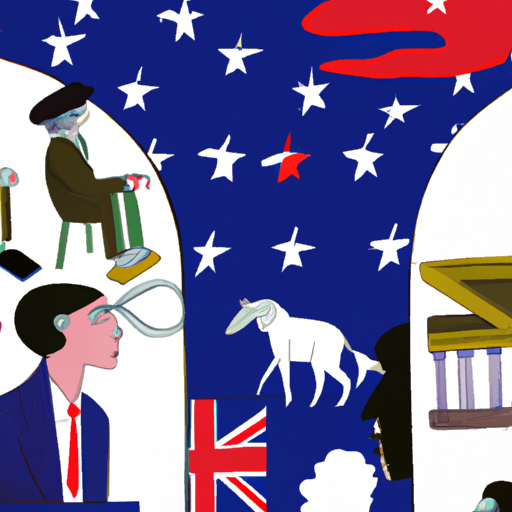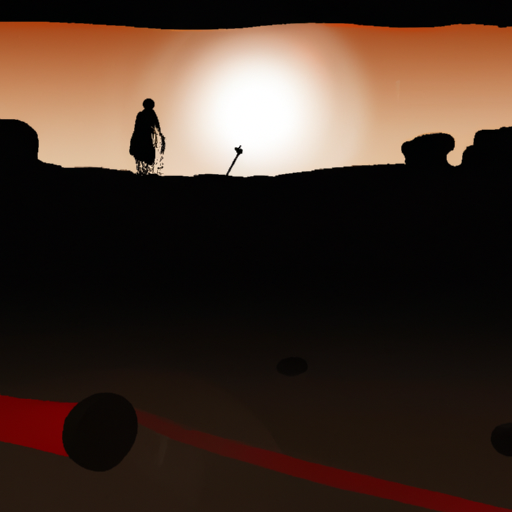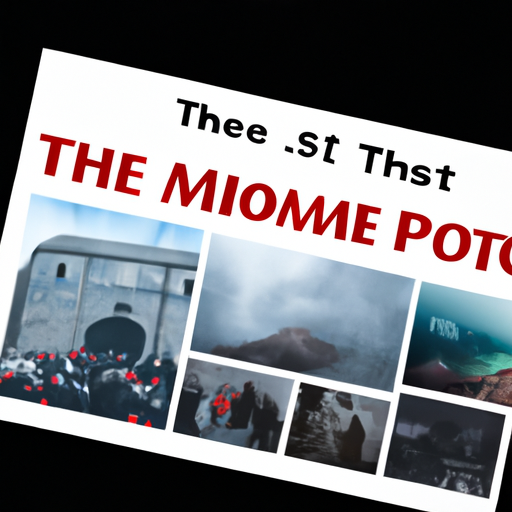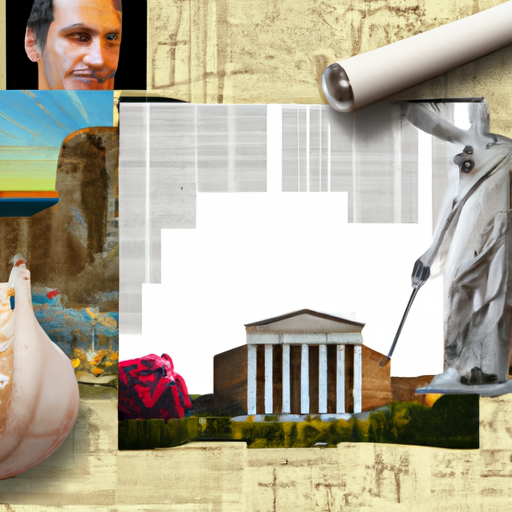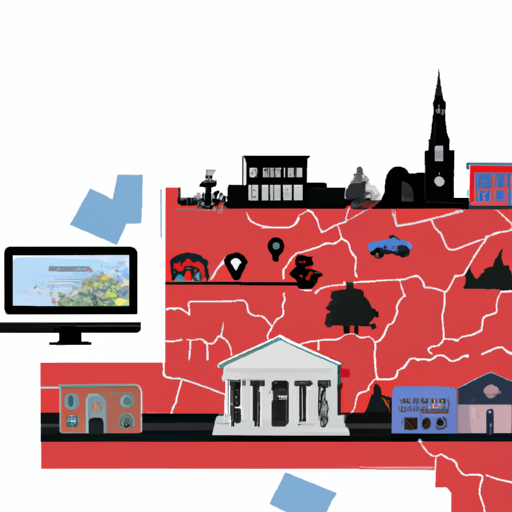A History of Death in Ancient China

The past can often be a mysterious realm, and the history of death in ancient China is no exception. From funerary rituals to burial practices, exploring the customs and traditions associated with mortality in this distant land can be a captivating journey. In ancient Chinese culture, death was seen as a transition from life to afterlife and was met with its own set of unique beliefs and practices. Funerals were elaborate events that included burning paper money and offerings for the deceased, as well as offering food and drinks in their honor. Burial practices also varied depending on social status, with those of higher classes being interred in more lavish tombs than those of lower classes. Additionally, superstitions surrounding death were believed by many in ancient China; some of these included avoiding words or activities related to death such as sweeping floors or using knives near gravesites.
Investigating the history of death in ancient China provides an intriguing glimpse into a distant past filled with secrets yet to be uncovered. Through research into its customs and traditions, we may gain insight into how our ancestors viewed life after death and their relationship with it.
Introduction

The complexities and nuances of death in ancient China were vast and ever-changing. Life’s end was viewed as a natural process, yet the rituals and customs that surrounded it were abundant. It was believed that after death, the soul would be judged by the gods before embarking on its journey to the afterlife. Funerals were elaborate spectacles involving offerings to ancestors and spirits, as well as ornate burials with symbolic items meant to assist them in their quest for eternity. Ancestor worship was also a major part of Chinese culture, with families often honoring their deceased relatives through various commemorations.
– Historical Perspectives on Death in Ancient China
The mysterious and multifaceted relationship between life and death has long been a part of the Chinese culture. In ancient times, death was seen as a transition from one existence to another, with the afterlife being a place of either reward or punishment depending on how one lived their life. Extravagant funeral ceremonies were held to honor the deceased, with offerings of food and money being made to them. Grieving rituals were also practiced by families in order to pay respects to their lost loved ones. Furthermore, death was perceived as an opportunity for spiritual growth and enlightenment, with many Chinese philosophers believing that it could lead to greater insight into life’s secrets. The concept of reincarnation further complicated this notion, making it all the more complex. It is evident that Ancient China had a unique view on mortality which has influenced its views on life ever since.
– Burial Practices of Ancient Chinese People
A mystery of untold ages, the burial practices of ancient Chinese people have captivated and intrigued. Tracing back to around 5000 BC in the Neolithic period, humans buried their dead in shallow pits, accompanied by animal bones and tools. This custom continued until the Shang Dynasty (1600-1046 BC), where burials became more intricate. Wealthy families would construct tombs with walls of stone or brick, containing multiple chambers for the deceased’s possessions; some villages were even built around these burial sites for the spirits of those who passed away.
The Zhou Dynasty (1046-256 BC) saw a change in honoring the dead: cremation was believed to release the spirit into heaven, and families would make clay models of houses or objects that they thought would accompany their loved ones after death.
Confucianism during the Han Dynasty (206 BC–220 AD) brought about a simpler funeral tradition, one focused on honoring ancestors rather than displaying power or wealth through extravagant burials or grave goods. This practice continues today in modern Chinese culture with funerals typically being modest affairs without much decoration or possessions accompanying those who pass away.
Throughout its long history, ancient Chinese burial practices have adapted to changing beliefs and customs; however, they remain an essential part of Chinese culture today.
– Understanding Ancient Chinese Views on the Afterlife
The afterlife was a concept of utmost importance in ancient Chinese culture and religion, with its complexity and fascination captivating the minds of many. It was believed that when a person passed away, their soul would enter Diyu – a spiritual realm divided into multiple levels. Depending on the sins committed in life, one could find themselves facing a variety of punishments; from being thrown into boiling cauldrons filled with molten metal to other forms of torment. Conversely, those who had lived good lives were said to be able to ascend directly to heavenly realms filled with beauty and peace, where they could enjoy eternal bliss and happiness. Thus providing assurance that justice would be served even after death.
– Historical Records of Death Rituals in Ancient China
Awe-inspiring and perplexing, the death rituals of Ancient China are a captivating topic. From dynasties to dynasties, the customs varied greatly in their complexity and grandeur. Ancient records reveal that offerings of food, incense, and paper money were made; funeral processions were conducted with pomp; burial ceremonies were held in solemnity; and posthumous titles were bestowed upon the deceased. Beyond honoring the dead, these rituals gave families a way to express their sorrow and reverence for the departed. By delving into these traditions, we can gain an appreciation for the values and beliefs of those who lived in Ancient China long ago.
– Exploring the Significance of Funerary Objects in Ancient China
Mysteriously shrouded in antiquity, funerary objects from Ancient China offer an invaluable glimpse into the culture and beliefs of the time. From pottery vessels to jade figurines, these artifacts were thought to provide protection and guidance for those making their way into the afterlife. Symbols such as dragons, phoenixes, and tigers were commonly found on these objects, representing qualities like strength and courage that would serve the deceased in the afterlife.
Not only did funerary objects provide spiritual aid, they also served a practical purpose by providing food and other necessities for the deceased’s journey. Ceramic bowls filled with offerings have been discovered in tombs throughout China, further evidence of this practice. Inscriptions or depictions of deities or spiritual figures often featured on these artifacts suggest Ancient Chinese people believed in an afterlife where they could still interact with their departed loved ones.
Funerary objects not only provided comfort and security for those left behind after a death; they also embodied the deep-seated beliefs about death and reincarnation held by Ancient Chinese society. These artifacts remain a powerful reminder of how deeply ingrained these concepts were during this period, serving both practical and spiritual purposes.
conclusion

The past of China held an outlook on death as a transformation from one life to another. Relatives of the deceased would often bury them with their possessions, and it was customary to conduct funerals in a ceremonious manner. Expressions of grief and veneration of ancestors were also essential parts of Chinese culture when it came to death. Life’s end was perceived as a natural event, yet simultaneously dreaded due to its potential for bringing bad fortune and misery to those left behind.
.
Some questions with answers
Q1. What was death like in ancient China?
A1. Death in ancient China was a highly ritualized process that focused on honoring the deceased and preparing them for their afterlife.
Q2. How did ancient Chinese people view death?
A2. Ancient Chinese people viewed death as a natural part of life, and believed that it should be respected and celebrated with rituals to ensure the deceased’s safe passage into the afterlife.
Q3. What rituals were performed after someone died in ancient China?
A3. After someone died in ancient China, traditional funerary rituals such as dressing the body in new clothes, writing prayers on paper or cloth to be placed in the coffin, burning incense, and offering food and money were commonly performed to honor the deceased.
Q4. How were tombs constructed for the dead in ancient China?
A4. Tombs were typically constructed according to strict rules related to geomancy (feng shui). They often included stone statues of animals or other figures, as well as inscriptions of prayers or blessings for the deceased.
Q5. What role did ancestor worship play in death rituals?
A5. Ancestor worship was an important part of death rituals in ancient China, with offerings made to honor departed ancestors and ensure their spirits would remain at peace.
